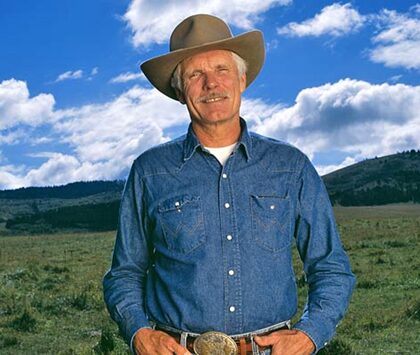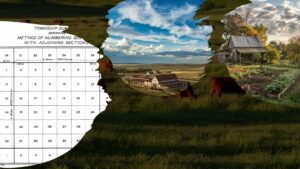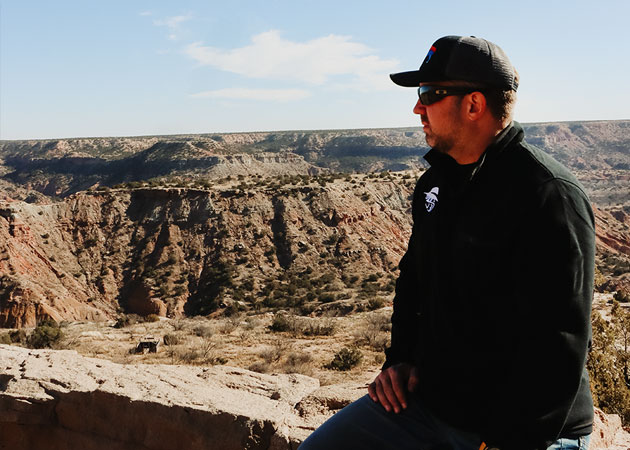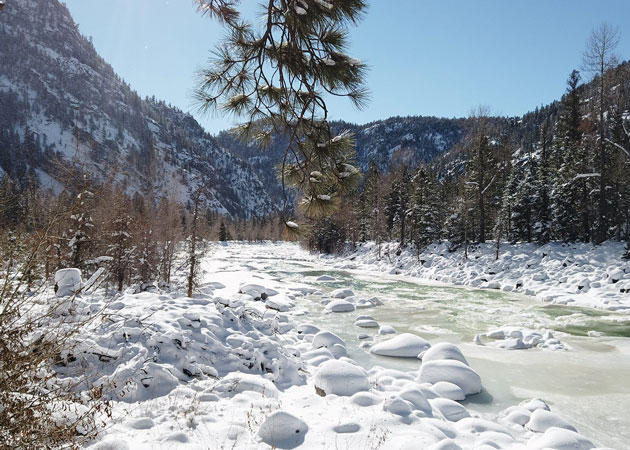Exploring the Trend of Billionaires Investing in Large Land Holdings in the USA Introduction

Introduction
In the vast tapestry of American landscapes, a new thread is being woven by the world’s wealthiest individuals – the acquisition of large land holdings. This trend, increasingly prevalent among billionaires, represents a convergence of economic power, environmental stewardship, and societal influence. From the rolling plains of the Midwest to the rugged terrains of the West, billionaires are staking their claims on vast expanses of land, reshaping traditional notions of ownership and investment.
The allure of large land holdings goes beyond mere financial diversification. It embodies a vision for the future, where private capital intersects with public good, where innovation meets conservation, and where sustainable development becomes a paramount concern. Against the backdrop of historical land ownership patterns shaped by colonization, westward expansion, and industrialization, this modern-day phenomenon offers a lens through which to explore the evolving relationship between wealth, land, and society.
At the forefront of this trend are iconic figures whose names resonate across industries and continents. Jeff Bezos, the visionary behind Amazon and Blue Origin, navigates the frontiers of space exploration while nurturing ambitions for sustainable land use. Bill Gates, renowned for his technological acumen and philanthropic endeavors, leverages his wealth to reimagine agriculture and food systems. Warren Buffett, the sage investor and steward of Berkshire Hathaway, sees land as a cornerstone of long-term value creation. And Ted Turner, the media mogul turned conservationist, dedicates vast tracts of land to wildlife preservation and ecosystem restoration.
These billionaires, among others, are not just acquiring land; they are shaping narratives, forging partnerships, and leaving indelible marks on the landscapes they inhabit. Their motivations range from financial prudence to environmental consciousness, from strategic foresight to a desire for legacy-building. Yet, alongside their ambitions lie questions and challenges – about wealth inequality, about community engagement, about the ethical responsibilities that come with immense resources.
In this article, we embark on a journey through the terrain of billionaire land investments in the USA. We traverse the motivations behind these investments, dissect their impacts on economies and ecosystems, navigate the ethical landscapes they inhabit, and peer into the crystal ball of future trends. By delving deep into the stories, successes, and struggles of these billionaire landowners, we unravel a tapestry that reflects not just wealth and power but also the aspirations and aspirations of a changing world.
Historical Context of Land Ownership in the USA
The historical context of land ownership in the United States is a multifaceted narrative that encompasses centuries of dynamic changes, cultural shifts, and legal transformations. Understanding this context is crucial for comprehending the evolution of large land holdings and the contemporary trends in billionaire investments.
Colonial Era and Indigenous Dispossession
The origins of land ownership in the USA can be traced back to the colonial era when European powers, primarily the British, established colonies along the eastern seaboard. The doctrine of “terra nullius” (land belonging to no one) was often used to justify the seizure of land inhabited by indigenous peoples. This period witnessed widespread dispossession, forced relocation, and violence against Native American tribes as colonists sought to expand their territorial control.
Land Grants and Expansion
During the 17th and 18th centuries, land grants were issued by colonial governments and later by the federal government to encourage settlement, agriculture, and economic development. The Homestead Act of 1862 further accelerated westward expansion by offering free land to settlers willing to cultivate and improve the land. This era saw the rise of large land holdings, often acquired through government grants, purchases, or inheritance.
Agrarian Economy and Plantation System
The agrarian economy of the southern states, particularly during the antebellum period, was characterized by large-scale plantations worked by enslaved laborers. Wealthy landowners, often aristocratic elites, amassed extensive land holdings devoted to cash crops such as cotton, tobacco, and sugar. The plantation system reinforced social hierarchies, economic disparities, and racial inequalities, shaping land ownership patterns and power structures.
Westward Expansion and Manifest Destiny
The concept of Manifest Destiny, popularized in the 19th century, promoted the idea of American expansionism and territorial acquisition from coast to coast. This expansion was fueled by government policies, including treaties with Native American tribes, land purchases, and military conquests. The acquisition of vast territories such as the Louisiana Purchase and the Oregon Territory led to the consolidation of federal lands and the redistribution of land to settlers, speculators, and corporations.
Industrialization and Urbanization
The Industrial Revolution brought profound changes to land ownership patterns as industrialization, urbanization, and infrastructure development transformed the landscape. Urban centers grew rapidly, attracting migrants, entrepreneurs, and investors who acquired land for commercial, residential, and industrial purposes. The emergence of corporate entities and real estate developers further influenced land markets and ownership structures.
Land Reform Movements and Conservation Initiatives
Throughout the 20th century, land reform movements, conservation initiatives, and regulatory reforms shaped land ownership dynamics. The Progressive Era witnessed efforts to address monopolistic land holdings, promote land redistribution, and enact environmental conservation policies. The establishment of national parks, forests, and wildlife refuges reflected a growing awareness of the need to protect natural resources and ecosystems.
Modern-Day Trends in Land Ownership
In the contemporary context, land ownership in the USA is characterized by a diverse array of stakeholders, including individual landowners, corporations, government entities, indigenous communities, conservation organizations, and investors, including billionaires. The trend of billionaires investing in large land holdings represents a convergence of economic interests, environmental concerns, and strategic visions for land use, development, and stewardship.
The historical context of land ownership in the USA reflects a complex interplay of colonization, expansionism, industrialization, social movements, and conservation efforts. This context shapes the current landscape of land ownership, influencing legal frameworks, cultural norms, economic activities, and environmental practices. Understanding this historical continuum is essential for analyzing contemporary land ownership trends, including billionaire investments in large land holdings and their implications for society, economy, and environment.
Major Billionaires Investing in Large Land Holdings
Let’s take a closer look at some of the major billionaires who have made significant investments in large land holdings across the United States. The following table provides an overview of their wealth, land acquisitions, and notable projects:
| Billionaire | Net Worth (USD) | Land Holdings | Notable Projects/Initiatives |
| Jeff Bezos | $200+ billion | Texas, New Mexico, California | Blue Origin space exploration, land conservation |
| Bill Gates | $130+ billion | Multiple states | Farmland preservation, sustainable agriculture |
| Warren Buffett | $100+ billion | Nebraska, Iowa | Long-term land investments, agricultural projects |
| Ted Turner | $2 billion | Montana, Georgia, New Mexico | Wildlife conservation, reforestation |
Jeff Bezos: Land Acquisitions for Space Exploration and Sustainability Projects
Jeff Bezos, the founder of Amazon and one of the wealthiest individuals globally, has diversified his investments beyond e-commerce and technology into the realm of large land holdings. Bezos owns vast tracts of land in Texas, New Mexico, and California, primarily for his aerospace company, Blue Origin. These lands serve as testing grounds for space exploration technologies and potential future launch sites.
Moreover, Bezos has shown a keen interest in environmental conservation. He has allocated significant resources to land conservation efforts, including reforestation projects and wildlife habitat restoration. His vision combines cutting-edge technology with environmental stewardship, aiming for a sustainable future both on and off the Earth.
Bill Gates: Agricultural Land Investments and Conservation Efforts
Bill Gates, co-founder of Microsoft and a prominent philanthropist, has invested heavily in agricultural land across multiple states in the USA. His focus extends beyond traditional farming practices, emphasizing sustainable agriculture and farmland preservation. Gates’ investments aim to address food security challenges, promote innovation in farming techniques, and mitigate environmental impacts.
Through his foundation, Gates has supported research and development initiatives in sustainable agriculture, including crop resilience to climate change, water conservation, and soil health improvement. His approach underscores the crucial role of private capital in driving positive change in food systems and land management practices.
Warren Buffett: Strategic Land Investments for Long-Term Value Creation
Warren Buffett, legendary investor and chairman of Berkshire Hathaway, has long recognized the value of strategic land investments. While Berkshire Hathaway’s portfolio spans diverse sectors, including insurance, utilities, and consumer goods, Buffett has maintained significant land holdings in states like Nebraska and Iowa.
Buffett’s approach to land investments is rooted in long-term value creation. He views land as a tangible asset with intrinsic value, capable of generating returns over time through appreciation, agricultural activities, and potential development opportunities. His stewardship of these lands reflects a pragmatic yet forward-thinking investment philosophy.
Ted Turner: Conservation-Focused Land Holdings and Environmental Impact
Ted Turner, media mogul and founder of CNN, is renowned for his conservation efforts and extensive land holdings. Turner owns vast properties in Montana, New Mexico, and Georgia, dedicated to wildlife conservation, reforestation, and sustainable land management practices.
Through his Turner Foundation and other conservation initiatives (Ted Turner Reserves, Turner Enterprises), Turner has championed biodiversity preservation, ecosystem restoration, and responsible land stewardship. His approach highlights the symbiotic relationship between land conservation, environmental protection, and human well-being. Refer to article on jamesbigleyranches.com related to Ted Tuner’s Vermejo here – LINK

Motivations Behind Billionaire Land Investments
The motivations driving billionaires to invest in large land holdings in the USA are diverse and multifaceted, encompassing financial, strategic, environmental, and legacy-building considerations. These motivations not only shape their investment decisions but also influence the broader impact of their land acquisitions on society, the economy, and the environment.
- Financial Diversification and Wealth Preservation:
- Portfolio Diversification: Billionaires often seek to diversify their investment portfolios beyond traditional assets like stocks, bonds, and real estate. Large land holdings provide a tangible and relatively stable asset class that can hedge against market volatility and economic uncertainties.
- Wealth Preservation: Land investments, particularly in strategic locations with potential for appreciation, offer a long-term wealth preservation strategy. Billionaires view land as a store of value that can withstand inflationary pressures and economic downturns.
- Strategic Vision and Value Creation:
- Strategic Asset Allocation: Some billionaires strategically allocate capital to land investments based on their vision for future growth sectors, such as renewable energy, technology infrastructure, or sustainable agriculture. They leverage their expertise, networks, and resources to unlock value and drive innovation in these areas.
- Development Opportunities: Large land holdings provide opportunities for development projects, including residential, commercial, and industrial developments. Billionaires with a vision for urban expansion or infrastructure development may acquire land strategically to capitalize on future demand and market trends.
- Environmental Consciousness and Sustainability:
- Conservation Initiatives: Many billionaires prioritize environmental conservation and sustainability in their land investments. They may acquire land for conservation purposes, wildlife habitat protection, reforestation projects, or carbon offset initiatives, aligning their investments with environmental stewardship goals.
- Sustainable Practices: Billionaires investing in agricultural land often implement sustainable farming practices, water conservation measures, and biodiversity enhancements. They recognize the importance of regenerative agriculture, soil health improvement, and ecosystem resilience in mitigating climate change impacts and promoting food security.
- Legacy Building and Philanthropic Impact:
- Philanthropic Endeavors: Land investments serve as a platform for billionaires to pursue philanthropic endeavors aligned with their values and passions. They may establish foundations, conservation trusts, or educational institutions on their land holdings, contributing to social welfare, environmental education, and community development.
- Generational Wealth Transfer: Land investments enable billionaires to create a lasting legacy for future generations. By preserving natural landscapes, supporting conservation efforts, and fostering sustainable land management practices, they leave a positive impact on the environment and society for years to come.
- Strategic Partnerships and Collaborations:
- Industry Partnerships: Billionaires often collaborate with industry experts, conservation organizations, research institutions, and government agencies to maximize the impact of their land investments. These partnerships facilitate knowledge exchange, best practices implementation, and collective action towards shared sustainability goals.
- Community Engagement: Successful billionaire land investments prioritize meaningful engagement with local communities, indigenous groups, and stakeholders. They seek input, build trust, and create shared value through inclusive decision-making processes, community development initiatives, and social impact programs.
- Risk Mitigation and Resilience:
- Diversification Benefits: Land investments offer diversification benefits beyond financial returns, including environmental, social, and governance (ESG) factors. Billionaires recognize the importance of ESG considerations in risk management, reputation enhancement, and long-term resilience of their investment portfolios.
- Adaptation Strategies: In the face of climate change, natural disasters, and geopolitical uncertainties, large land holdings provide a platform for adaptation strategies such as ecosystem restoration, water management, and disaster resilience planning. Billionaires proactively address climate risks and build resilience into their land management practices.
- Innovation and Technology Integration:
- Technological Advancements: Billionaires leverage cutting-edge technologies such as artificial intelligence, satellite imaging, drones, and precision agriculture tools to optimize land use, resource allocation, and operational efficiency. They harness data-driven insights to make informed decisions and drive continuous improvement in land management practices.
- Innovation Ecosystems: Large land holdings serve as innovation ecosystems where entrepreneurs, startups, and research institutions collaborate on breakthrough solutions for sustainable development, renewable energy deployment, and ecosystem restoration. Billionaires foster innovation clusters that catalyze economic growth, job creation, and technological advancement in their land portfolios.
- Global Trends and Market Dynamics:
- Globalization: Billionaires’ land investments reflect broader global trends such as urbanization, population growth, and natural resource scarcity. They anticipate future demand for land-based assets, infrastructure investments, and sustainable development solutions in response to evolving market dynamics.
- Geopolitical Considerations: Geopolitical factors, regulatory changes, and geopolitical risks influence billionaires’ land investment strategies. They navigate geopolitical complexities, geopolitical risks, and regulatory challenges to optimize their land portfolios and enhance investment returns.
In summary, the motivations behind billionaire land investments are driven by a combination of financial objectives, strategic foresight, environmental consciousness, philanthropic aspirations, risk management considerations, innovation imperatives, and global market dynamics. These motivations shape billionaires’ roles as investors, stewards of the land, and catalysts for positive change in society and the environment.

A Comprehensive Guide to Financing Land
A Comprehensive Guide to Financing Land: Strategies, Considerations, and Steps Introduction Land has always been a symbol of stability, opportunity, and prosperity. From ancestral homesteads

Mastering Land Sales: A Comprehensive Guide to Selling Your Property
Mastering Land Sales: A Comprehensive Guide to Selling Your Property Introduction The process of selling land is often perceived as a complex and challenging endeavor,

Legal Checklist for Ranch Investments
Legal Checklist for Ranch Investments In ranch investments, legal considerations are the bedrock upon which successful transactions and operational endeavors are constructed. Ranching ventures are

Is 10 Acres Considered a Ranch? Debunking Common Misconceptions
Is 10 Acres Considered a Ranch? Debunking Common Misconceptions 1. Introduction Ranching, with its iconic imagery of wide-open spaces, cowboys herding cattle, and sprawling homesteads,

The Top Five Largest Ranches in Texas: A Deep Dive into the Heart of Ranching Heritage
The Top Five Largest Ranches in Texas: A Deep Dive into the Heart of Ranching Heritage Introduction Texas, often hailed as the heart of ranching

The Intricacies of the 2-Cow Tax Loophole in California: Unveiling the Complexities
The Intricacies of the 2-Cow Tax Loophole in California: Unveiling the Complexities Introduction Taxation is a fundamental aspect of modern society, serving as the




